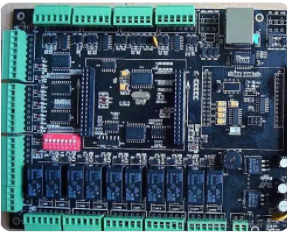The following is an introduction to the effects of different processes on the pads on the PCB:
1. If the two ends of the PCB chip components are not connected to the plug-in components, test points must be added. The diameter of the test points should be between 1.0mm and 1.5mm to facilitate online tester testing. The edge of the test point pad is at least 0.4mm away from the edge of the surrounding pad. The diameter of the test pad is more than 1mm and must have network properties. The center distance between the two test pads should be greater than or equal to 2.54mm; if a via is used as a measurement point, a pad must be added outside the via. The diameter Above 1mm (inclusive);
2. PCB pads must be added to the position where the holes with electrical connections are located; all pads must have network attributes. For networks without connected components, the network names cannot be the same; the distance between the center of the positioning hole and the center of the test pad is more than 3mm ; Other irregular shapes, but with electrical connection slots, pads, etc., are uniformly placed on the mechanical layer 1 (referring to single-insertion, fuse and other slotted holes).
3. If the pin pads of components with dense pin spacing (pin spacing less than 2.0mm) (such as: IC, swing socket, etc.) are not connected to the pads of the manual plug-in unit, test pads must be added. The diameter of the test point should be between 1.2mm~1.5mm to facilitate the on-line tester test.

4. If the distance between pads is less than 0.4mm, white oil must be applied to reduce continuous soldering when the wave crest is exceeded.
5. The ends and ends of the patch component of the glue dispensing process should be designed with lead-tin. The lead-tin width is recommended to use 0.5mm wire, and the length is generally 2 or 3mm.
6. If there are hand-soldering components on the single panel, the tin bath should be removed, the direction is opposite to the tin passing direction, and the width of the hole is 0.3mm to 0.8mm
7. The spacing and size of the conductive rubber buttons should be consistent with the actual size of the conductive rubber buttons. The PCB board connected to this should be designed as a gold finger, and the corresponding gold plating thickness should be specified (generally required to be greater than 0.05um~0.015um ).
8. The size and spacing of the PCB pads should match the size of the SMD components.
a. When no special requirements are made, the shape of the component hole, the pad and the component foot must match, and the symmetry of the pad relative to the hole center should be ensured (square component foot formula-shaped component hole, square pad; round component foot configuration Circular component holes, circular pads), and the adjacent pads are kept independent of each other to prevent thin tin and wire drawing;
b. Adjacent component pins in the same circuit or compatible devices with different PIN pitches must have separate pad holes, especially the compatible pads of the package compatible relays. For example, the PCB LAYOUT cannot be set separately. The pad holes of the two pads must be surrounded by solder mask
9. When designing a multi-layer board, pay attention to the components of the metal shell. The shell and the printed board are in contact with the printed board during the plug-in. The pad on the top layer cannot be opened, and it must be covered with green oil or silk screen oil.
10. Minimize the slotting and opening of the printed board during the design and layout of the PCB board, so as not to affect the strength of the printed board.
11. Valuable components: Do not place valuable components on the corners, edges, mounting holes, slots, cutting openings and corners of the PCB. These locations are the high stress areas of the printed board, which are likely to cause welding. Cracks and cracks of points and components.
12. Heavier components (such as transformers) should not be far away from the positioning holes, so as not to affect the strength and deformation of the printed board. When laying out, you should choose to place the heavier components under the PCB (also the last to enter the wave soldering side).
13. The devices and circuits that can radiate energy such as transformers and relays should be kept away from amplifiers, single-chip computers, crystal oscillators, reset circuits and other easily disturbed devices and circuits, so as not to affect the reliability of work.
14. For QFP packaged IC (wave soldering process is required), it must be placed at 45 degrees, and solder pads should be added.